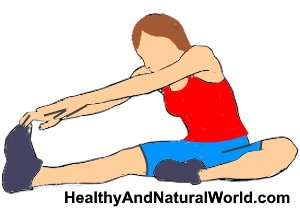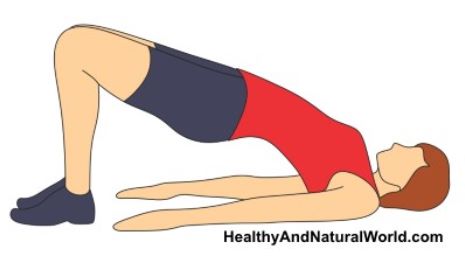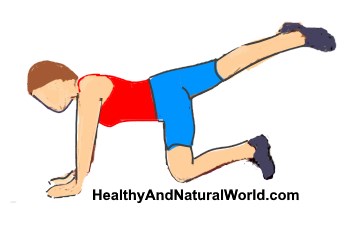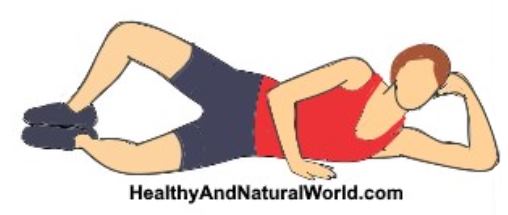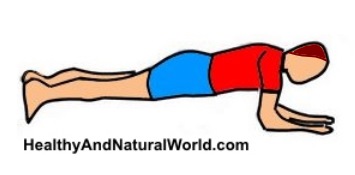Ischial Tuberosity Pain (Sit Bone Pain): Causes, Symptoms and Treatments
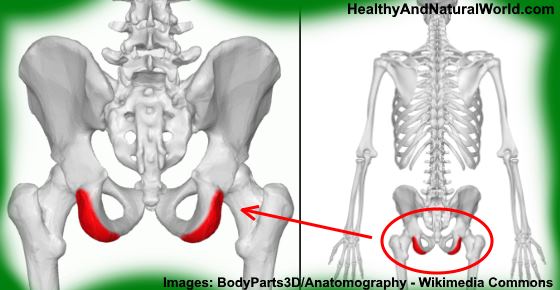
If you find it difficult to sit comfortably for a long time, it could be that you suffer from ischial tuberosity pain (sit bone pain). Your ischial tuberosity is located at the bottom of your pelvis and is the bone that you sit on. Therefore, the ischial tuberosity carries most of your weight when you sit.
Sit bone pain can result from dysfunction of joints in your pelvic area caused by wear and tear or trauma. Because many muscles and ligaments are connected to the ischial tuberosity, sit bone pain can be caused by hamstring or sciatica problems.
One of the most common symptoms in your sit bone is pain when sitting for a long time. However, you may also have cramping in one or both of your legs, pain running down your leg, or weakness in your feet. This can also cause hamstring pain when sitting.
Knowing how to treat ischial tuberosity pain can be a challenge because the pain in your buttocks can become chronic. It can also be difficult to know if the pain is from your ischium or other pelvic bones. Very often, using ice or heat can help to relieve the pain when sitting. Exercising to strengthen your butt muscles and your core can also help to relieve ischial tuberosity pain syndrome.
In this article, I am going to look at the various reasons why your butt hurts so much when you sit for a long time. You will also find out ways to relieve buttock pain naturally and how to prevent the symptoms of sit bone pain.
What is the Sit Bone?
The sit bone (ischial tuberosity) is sometimes referred to as the sitz bone, sits bone, or sitting bone. The sit bone is a bony protrusion at the base of your pelvic bones.
According to the University of the West of England, the ischium is divided into an upper part and lower part. The thick lower part of the bone is called the ischial tuberosity and you have one on either side of your buttocks. Both have a slightly triangular shape and these are the bones that you sit on.1
The University of Michigan Medical School reports that various ligaments and muscles attach to your ischium bones. For example, ligaments attach to your gluteus maximus which are necessary to keep your upper body stable. Also, your hamstring is connected to your sit bone as well as your sciatic nerve.2
According to the Merriam Webster dictionary, the main function of your sit bone is to bear your body weight when sitting.3
Symptoms of Sit Bone Pain
Pain when sitting down is one of the main symptoms of sit bone pain. However, depending on the extent of damage to your ischial tuberosity and other ligaments, muscles, or nerves involved, you will have associated symptoms.
The Journal of Korean Neurosurgical Society reports that prolonged sitting on hard surfaces will result in pain and numbness in your buttocks. This can also affect muscles and ligaments in your lower legs.4
Another symptom of sit bone pain occurs if your sciatic nerve is involved. A trapped sciatic nerve can cause lower back pain (lumbar pain) with pain and/or tingling sensations that radiate down your leg. This can cause inner thigh pain and also tingling or numbness in your leg.
The Journal of the Hip Preservation Society says that pain in the sit bone can also be a reason for groin pain and pain in the center of your buttocks. If your hamstring is affected then you could have weakness in one or both of your legs and it may affect your gait.5
Causes of Pain Around the Sit Bone
Let’s look at some of the most common causes of butt bone pain when sitting that comes from your ischial tuberosity.
Ischial tuberosity stress fracture from exercising
A stress fracture in your ischial tuberosity from exercising or from wear and tear is a common reason for buttock pain as well as pelvic bone pain when sitting.
According to the journal Hip & Pelvis, pain in the pelvic area can occur due to small stress fractures in the pelvic bones. Researchers found that ischial tuberosity injuries have similar symptoms to hamstring injuries. Damage to the sit bone can occur when the hip is suddenly flexed. Other reasons for stress fractures on the ischial tuberosity are overuse injuries and too much pressure on the pelvic bone.6
Risk factors that can cause stress fractures in your sit bone are running long distances, trauma that bruises the bones in your buttocks, or intense exercising. These are also some of the reasons for sacroiliac joint pain.
Sitting on hard surfaces causes sit bone pain
Sit bone pain can be caused if you have to sit for a long time on hard surfaces. This can cause pain in just your right buttock or be a reason for soreness in your left buttock.
Sitting on hard surfaces for a long period of time can cause a condition called ischial bursitis. According to researchers from Harvard Medical School, one-sided buttock pain could be caused by inflammation in your lower pelvis. Sitting or standing for long periods on a hard surface can be a reason why the bones in your buttocks hurt and are sore.7
Dr. William Shiel on MedicineNet says that inflammation of your sit bone can also cause stiffness and tenderness in your buttocks. You may also have pain when you walk, and the pain can cause upper thigh pain. Lying down may make the pain in your buttocks worse.8
Dr. Shiel recommends using ice packs to get rid of soreness from inflamed bones in your buttocks. Also, strengthening exercises can help to prevent ischium bone pain.
Hamstring injury causing sit bone pain
A hamstring injury can cause severe pain in your lower buttock that is worse when you bend over or straighten your leg.
Your hamstring is directly connected to your ischium bones, and any tear or damage to your hamstring can result in sit bone pain. The Journal of Manual and Manipulative Therapy reports that hamstring injuries can cause buttock pain on the side where the injury occurred. This can cause tenderness in the right or left buttock and severe pain down the leg.9
Dr. Tyler Wheeler on WebMD says that you can help prevent hamstring injuries by warming up before exercising. You should also stop exercising if you feel sharp pains in your buttocks or down the back of your thigh.10
Sciatic nerve damage and ischial tuberosity pain
Severe pain in your buttocks when you sit down could be caused by damage to your sciatic nerve.
Your sciatic nerve runs from the base of your spine, through your buttocks to your lower leg. Dr. William Shiel on MedicineNet says that a trapped sciatic nerve can cause lumbar pain and pain behind the knee. However, sciatica can also be a reason for ischial tuberosity pain.11
Dr. Andrew Elkwood on Medscape says that the sciatic nerve is in the area of the sit bone close to the hamstring muscles. If the sciatic nerve becomes trapped or pinched, then you could feel pain that gets worse when sitting or standing for a long period of time.12
How to Treat Pain in the Sit Bone
The best way to treat acute pain in the sit bone is to use a combination of hot and cold packs to relieve the discomfort in your buttocks. If you have chronic pain when sitting, then strengthening your hamstring and glutes can help to get rid of the buttock pain for good.
R.I.C.E. for sit bone pain relief
Pain management for sit bone buttock pain involves resting the sore area and applying ice to minimize pain and swelling.
The Muscles, Ligaments, and Tendons Journal reports that recovery from hamstring injuries involving the ischial tuberosity is accelerated when the RICE protocol is used immediately following the injury. This should be used for the first 2 days.13
The RICE protocol stands for Rest, Ice, Compression, and Elevation.
How to use the RICE protocol to get rid of ischial tuberosity pain:
To help get rid of buttock pain using the RICE protocol, the American Academy of Orthopedic Surgeons recommends the following:14
- Rest the sore leg from any activity that causes pain, soreness, or tenderness. This may involve using crutches if you have a lot of pain in your buttocks and hamstring.
- Ice the affected buttock by applying a cold pack for 20 minutes at a time.
- Compress the affected leg and buttock with a compression bandage. This helps to reduce swelling and blood loss.
- Elevate your injured leg when resting to help prevent too much swelling.
After 2-3 days, you should start using a heat pack to help relieve pain in your buttocks caused by a damaged ischial tuberosity. To find out how to use heat to relieve joint soreness, please read my article on getting rid of muscle pain naturally. There you will also find out when to use cold or heat therapy for stiff joints.
Exercises to Get Rid of Ischial Tuberosity Pain
Physiotherapists generally recommend specific exercises to strengthen your lower body muscles and hamstring muscles to get rid of sit bone pain.
Hamstring stretches for sit bone pain
The International Journal of Sports Physical Therapy recommends various techniques to strengthen your hamstrings. This can help to relieve chronic gluteal pain and prevent sit bone pain from returning.15
Easy hamstring stretches to relieve sit bone pain
Here is an easy exercise you can do at home to help stretch and work your hamstring to both relieve and prevent sit bone pain.
- Sit on the floor with your right leg straight in front of you.
- Bend your left leg so that the sole of your left foot is against your right inner thigh.
- Place your hands towards the right foot.
- Slowly bend forward so that your chest moves towards your right knee.
- Hold for 30 seconds to stretch your hamstring.
- Repeat with your other leg.
- Do the exercise daily to help keep your hamstring flexible and prevent stiffness in your buttocks.
Bridge exercises to work your hamstrings and reduce sit bone pain
If you need to relieve sit bone pain at home, this is a very easy exercise that you can do.
- Lie on your back with your knees bent.
- Push your hips upward to work your glutes and hamstrings. (There should be a straight line from your shoulder to your knees).
- Hold for 5-10 seconds and lower your buttocks.
- Repeat 10 times to help strengthen your butt muscles and your hamstrings.
This exercise will also help to strengthen your lower back and prevent back pain. You can also try my easy foam roller exercise to get rid of sciatica-related pain in your buttocks.
Strengthen glutes to relieve ischial tuberosity pain
If you want to get rid of pain for good when you have been sitting for a long time, it is important to strengthen your glutes.
The International Journal of Sports Physical Therapy says that glute strengthening can help to prevent recurrences of chronic sit bone pain. Having stronger muscles in your buttocks supports the ligaments and tendons that are connected to your ischial tuberosity bones.15
If you have a sore bone in your buttocks, you can try the following exercises.
Glute strengthening exercise for sit bone pain
To help work your buttock muscles and strengthen your glutes, this is what you should do.
- Go on your hands and knees keeping your back straight.
- Keep your upper body still and extend your leg as straight as it can go.
- Hold for 30 seconds.
- Repeat 10 times to help increase flexibility and strength in your glutes.
Exercise to strengthen your butt muscles and prevent pain when sitting
According to the Journal of Orthopaedic and Sports Physical Therapy, one of the best exercises to strengthen your butt and prevent buttock pain is the clamshell exercise.16 This is how to do it:
- Lie on the floor on your right side and bend your knees and hips at a 45-degree angle.
- Keep your feet together and raise your left knee as far as you can without moving your pelvis.
- Hold for a few seconds and return to the starting position.
- Repeat 10 times to help improve the strength of your glutes.
- Turn on to your left side and repeat.
- Do the glute-strengthen exercise 2-3 times a week to help prevent butt pain when sitting.
This exercise to strengthen your buttock muscles is also one of my exercises that you can use if you want to get a fuller, rounder butt.
Strengthen core to help treat recurring sit bone pain
If your butt bone often hurts when you sit for a length of time, you should also work at strengthening your core muscles to prevent pain.
The Asian Journal of Sports Medicine reports that core muscle strengthening is a key element to prevent hamstring injuries and speed up their recovery.17
How to strengthen your core to get rid of butt pain from sitting
Plank exercises are one of the best ways of strengthening your core to help get rid of the pain that comes from bones in your buttocks.
- Lie face down on the ground resting on your elbows.
- Your upper arm should be straight and at a 90-degree angle to the floor.
- Tighten your abdominal muscles and your glutes and hold the position for as long as you can.
- Repeat 3 or 4 times, resting for about a minute between each repetition.
- Do daily to help improve your core strength and prevent pain when sitting.
When to See a Doctor for Pain When Sitting
If you find that natural remedies to relieve sit bone pain in your buttocks don’t help, you should visit your doctor or a qualified physiotherapist. This is especially important if you have severe pain in your butt when sitting down and it interferes with your daily activities.
Read my other related articles:
- 10 Exercises to Tone Your Legs and Butt At Home (With Illustrations)
- Planks – How This Exercise Can Transform Your Entire Body
- Sacrum Pain or Sacroiliac Joint Pain: Causes, Symptoms, and Treatments
Scientific Research Referenced in this Article

